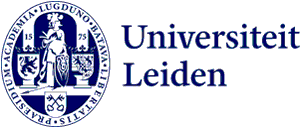
International students explore the archaeology of Oss: ‘I was responsible for finding 50% of the pottery sherds’
The Municipality of Oss is a household name in the world of Dutch archaeology. For fifty years, Leiden archaeologists, in collaboration with residents of Oss, have been uncovering the history of the municipality. 2024 is the archaeological year of Oss! In a series of interviews we look back on fifty years of collaboration and look to the future. This time we interview two first-year archaeology students, who participated in the Field School of 2024.
Good place to start
In the first year of the Leiden bachelor’s programme in Archaeology, students will learn to excavate in the so-called Field School. Here they experience the basics of the archaeological discipline in the field. 2024, as in previous years, saw the Field School taking place in Oss. ‘For me the expectations were high,’ first-year student Wojtek Miastkowski says. Originally from Poland, Wojtek had already participated in archaeological work in the city of Gdansk. ‘This was a site at the edge of the end of medieval and the beginning of early modern times, with much better preservation. The site in Oss, on the other hand, is much older, and has poor preservation. Still, it surprised me too see how much information we can retrieve from it.’
Frieda, originally from Germany, also had some excavation experience before coming to Leiden. ‘I did an internship in the city centre of Leipzig on a site with late medieval and World War II features.’ She explains. ‘Oss was different, especially since we could work in the field without people standing around you and taking pictures the whole time, like we were in the zoo. I also loved to dig in the sand, it is much easier to excavate in than clay.’
Wojtek nods. ‘The soil makes Oss a great training ground: you dig in yellow sand, and archaeological remains are a dark color. If you encounter something dark, it’s a feature, if not, it’s not. Good place to start and learn the basics of archaeology.’

Bronze age well
Even though the Oss’ archaeological record on the Dutch Bronze Age is second to none, it doesn’t mean you will necessarily find a lot of artefacts. ‘In the time I was in Oss, I was responsible for finding 50% of the pottery sherds!’ Wojtek announces proudly. ‘The total amount of unearthed sherds were two, so one was mine, retrieved from the bottom of a bronze age well. Everyone was surprised we found so little.’
Frieda’s term in Oss saw a bit more remains. ‘We encountered the features of bronze age houses, as well as pottery sherds. I even found the rim of a pot and I was very happy about this baby.’ She smiles broadly. ‘In total I found three sherds and different features, and the other students also found a lot. Like the remains of a goat with very nicely preserved wood.’ Which is a rare find indeed.

‘Oss is iconic’
With participating in the Field School in Oss, the first year’s students are now part of a project that has been running for half a century. ‘It is nice to have this one familiar thing that most archaeologists that graduate at Leiden University have in common,’ Wojtek notes. ‘I already note that this is a conversation starter. You can always ask ‘How was your Oss?’ Frieda laughs at that: ‘I actually had this at the Faculty’s end of the year event! Many people asked me how Oss had been.’ Wojtek nods: ‘Oss is iconic.’

Stench and hail
Every fieldwork has its share of funny anecdotes, and the Field School in Oss is no different. Wojtek shares a weather related event that happened one day. ‘The day started off with quite nice weather, but at the moment we reached the excavation, clouds started gathering. Dr Mark Driessen proclaimed to the heavens that he would not accept any rain. And indeed, ten minutes later, there was no rain. Instead it started hailing.’ He grins. ‘And there was Mark Driessen, shouting, ‘See, it is not raining!’ We were all laughing while we excavated in the hailstorm.’
Frieda regales the story of the finding of the goat remains. ‘Since the goat had been lying under the ground water level for ages, it hadn’t completely decomposed, so the stench it produced was terrible. We all had to cover our mouths. Of course the goat was found on the day all the student’s parents visited the site.’ You just cannot plan for these things. Wojtek shakes his head: ‘It is the delightful life of an archaeologist.’

Municipal identity
Aside from the fun, the excavations in Oss are a serious business. Their results and remarkable findings have found their way into the municipal identity, and the archaeological remains are highly appreciated by the local inhabitants. ‘It is very important to keep in touch with the people that live around the site. We are digging up their history and they feel connected to the land,’ Wojtek notes.
Frieda agrees: ‘As an archaeologist, it is very important to involve the people living in the area of an excavation. They usually have a lot of information on the area, the terrain, the local crops or animals. Of course participating only for two weeks is not enough time to create connections with the local inhabitants.’ Fortunately, the Leiden excavation leaders do have and value these connections.
